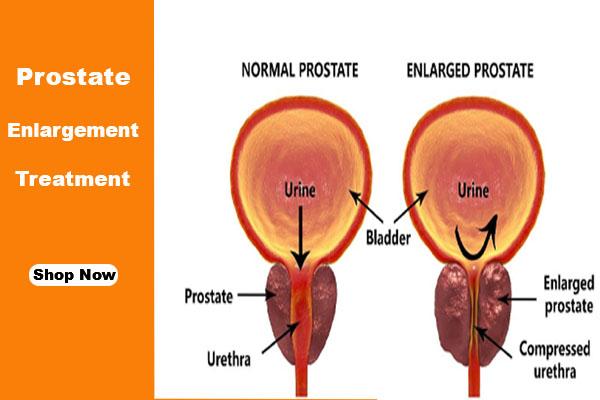Table of contents [Show]
What Is a Vaginal Yeast Infection?
A vaginal yeast infection also called vaginal candidiasis or candidal vulvovaginitis occurs when the fungus Candida albicans (or less commonly other Candida species) overgrows in the vagina and vulva, leading to irritating symptoms. Under normal conditions, the vagina hosts a balanced ecosystem of bacteria (especially Lactobacillus) and low levels of yeast; this balance keeps yeast levels in check. However, when that balance is disrupted, a yeast overgrowth can trigger discomfort and inflammation. Many women wonder about cottage cheese discharge yeast infection because the thick, white, curd-like discharge is a hallmark sign.
Others search “how to tell yeast infection vs bacterial vaginosis” because symptoms of vulvovaginal candidiasis often overlap with other vaginal infections. Although yeast infections are not technically an STI, is yeast infection contagious during sex is a common question. In fact, vaginal yeast infection is typically not transmitted through sex, though sexual activity can sometimes trigger imbalance.
Symptoms of Vaginal Yeast Infection |
- Itching and irritation of vulva and vagina: One of the earliest and most persistent signs is intense vaginal itching and burning sensation, often aggravated throughout the day or at night. Women frequently search for “vaginal yeast infection itchy burning” because this combination is classic for Candida overgrowth. Sometimes the itching is so severe that scratching can lead to small cracks or fissures in vulvar skin. The irritation may extend to the labia majora or labia minora, causing soreness and discomfort during everyday movements.
- Thick, white “cottage cheese” discharge: Another common sign is a yeast infection discharge thick white substance often described as resembling cottage cheese. Unlike bacterial vaginosis, this discharge rarely has a strong odor. People also look up “white clumpy vaginal discharge yeast” to compare appearance. The discharge may vary from heavy to light, but its texture is usually creamy or curdy. Some may also experience watery yeast infection discharge when mixed with normal vaginal fluid.
- Burning or stinging during urination (dysuria): Because the urethral opening lies near the infected vaginal tissues, pain or burning during urination yeast infection is common. Some women notice a sharp sting when the urine stream touches vulvar skin that’s inflamed. This symptom often causes confusion with urinary tract infections, prompting searches for “urine burning yeast vs UTI.”
- Pain during sexual intercourse (dyspareunia): Swelling and irritation of the vaginal mucosa make pain with sex yeast infection a bothersome symptom. Many patients ask, “can yeast infection cause pain during sex?” The friction of intercourse aggravates inflamed tissues, creating sharp or burning pain. This discomfort often lessens once treatment begins.
- Redness, swelling, soreness of the vulva: Beyond internal symptoms, external signs include redness and swelling of vulva and vaginal lips. The skin may appear inflamed, tender, or raw. In severe or complicated cases, women may notice yeast infection sores or fissures on the vulvar skin.
- Symptoms before menses or flare ups: Some women notice yeast infection symptoms before period such as increased itching or discharge likely due to hormonal shifts and changes in vaginal pH. Others refer to recurring yeast infection before menses when symptoms tend to reappear just before menstruation.
Causes & Risk Factors of Vaginal Yeast Infection |
- Disruption of vaginal flora by antibiotics: One of the most common causes is taking broad-spectrum antibiotics yeast infection risk. Antibiotics kill not only harmful bacteria but also beneficial Lactobacillus species that normally suppress yeast growth. With fewer lactobacilli, Candida is free to overgrow, creating a yeast infection after antibiotics scenario. Many women notice symptoms days after finishing a course of antibiotics.
- Hormonal fluctuations (pregnancy, birth control, estrogen therapy): Hormonal changes can shift vaginal conditions. Yeast infection in pregnancy symptoms are common because increased estrogen and glycogen levels encourage yeast growth. Similarly, high-estrogen birth control yeast infection risk is a known trigger. Women on hormone replacement yeast infections also sometimes face recurrent candidiasis. The hormonal shifts alter vaginal pH and immune defenses, tilting balance in favor of yeast.
- Uncontrolled diabetes or high blood sugar: Excess sugar in the bloodstream can make the vaginal environment more favorable for yeast overgrowth in uncontrolled diabetes. A high vaginal glucose level yeast infection creates a nutrient-rich environment for Candida. That’s why many diabetic women report yeast infection and diabetes link or yeast infection frequent in diabetics.
- Weakened immune system or immunocompromise: Conditions such as HIV yeast infections frequent or use of immunosuppressive drugs weaken the body’s ability to suppress fungus. Women with candidiasis in immunocompromised patients often experience more severe, persistent, or recurrent infections. The immune system normally keeps Candida in a latent or minimal state; when immunity drops, Candida multiplies unchecked.
- Tight, non-breathable clothing and moisture: Wearing synthetic underwear or tight jeans traps heat and moisture, creating the perfect conditions for fungal growth. Many women search “tight pants yeast infection risk” or “wet underwear yeast infection.” Similarly, staying in wet swimwear yeast infection trigger situations can provoke symptoms.
- Irritants and vaginal hygiene practices: Products like scented soaps, douches, feminine sprays, and perfumed pads disrupt the delicate pH and bacterial balance. People often look for “scented soap yeast infection” or “douching yeast infection cause.” These habits can deplete protective flora and make yeast overgrowth more likely.
- Frequent sexual activity or new partnerships: Though not a classic STI, sexual activity yeast infection correlation is observed. New partners or frequent sex may introduce microbes or micro-abrasions that disturb vaginal balance. Many wonder “can sex cause yeast infection recurrence.” While sex alone doesn’t directly cause candidiasis, it can be a cofactor in imbalance.
- Recurrent or resistant Candida strains: In some women, the infecting species may be non-albicans Candida glabrata yeast infection or azole-resistant yeast strain infection. These species respond less well to standard treatments and may require special regimens or longer courses. Many patients ask, “why my yeast infection keeps coming back non albicans.”
- Use of certain medical devices: Devices like intrauterine devices (IUDs) or diaphragms may trap moisture or irritate mucosa, creating a device associated yeast infection risk. Also, tampons or menstrual cups used for extended hours may create local environments for yeast proliferation.
Prevention Strategies for Vaginal Yeast Infection |
- Wear breathable, cotton underwear & avoid tight synthetic clothing: Always choose cotton underwear yeast infection prevention because cotton allows air circulation and wicks moisture, discouraging fungal growth. Many recommend avoiding nylon underwear yeast risk, synthetic fabrics, or tight pants that trap heat and humidity. Changing out of wet clothes or swimsuits promptly (i.e. “wet bathing suit yeast infection”) also helps.
- Avoid douching, scented hygiene products, and harsh soaps: Using douche yeast infection risk or scented feminine washes disrupts the natural balance of vaginal flora. The healthy Lactobacillus bacteria get washed away, leaving yeast unopposed. Stick to plain water or mild, unscented cleansers externally, and skip vaginal sprays entirely. Many women search “everyday vaginal wash yeast safe” to understand what products are gentle.
- Manage blood sugar and diabetes effectively: If you have diabetes, keeping it well controlled reduces the yeast infection risk in diabetics. High blood sugar provides more substrate for yeast to grow. Many refer to “yeast infection and high sugar levels” when investigating recurrent symptoms.
- Use antibiotics judiciously, and consider probiotic support: Whenever possible, take antibiotics only when necessary. When you must take antibiotics, pairing with probiotic for yeast prevention during antibiotics may help maintain bacterial balance some use yogurt with live cultures or Lactobacillus supplements yeast prevention. Yeast infection after antibiotic therapy is a common occurrence, so supportive measures help reduce that risk.
- Limit estrogen exposure when possible: If you use high-dose hormonal contraceptives or estrogen therapy, discuss alternatives with your doctor. Minimizing excess estrogen reduces the hormonal yeast infection triggers that favor Candida’s growth. Also, avoiding unnecessary hormone fluctuations may reduce yeast infection linked to hormonal changes.
- Practice good vulvovaginal hygiene habits: After using the restroom, always wipe front to back to avoid transferring fecal flora. Avoid prolonged wetness change pads or tampons frequently during menstruation. Do not leave tampons in for extended periods, and avoid menstrual cup or tampon yeast buildup by changing often. Taking lukewarm baths (not hot) and avoiding bubble baths helps too.
- Limit sexual practices that disrupt vaginal balance: Reduce frequent use of lubricants or spermicides yeast infection risk, especially those that contain glycerin or harsh chemicals. Use condoms, especially during flare-ups, as condoms and yeast infection trade-offs may protect tissues. Avoid sex during active symptoms to prevent further irritation and spread of pathogens.
- Strengthen your immune system: A robust immune system can help suppress yeast flare-ups. This includes adequate sleep, maintaining a nutritious diet, managing stress, and possibly using herbal or nutritional supplements with immune boosting for vaginal health intentions. Some women search “natural ways to prevent yeast infections immunity” when exploring holistic methods.
- Use periodic monitoring and medical evaluation for frequent recurrences: If you experience recurrent yeast infections every few months, schedule a medical evaluation to test for non-albicans Candida strains, diabetes, hormonal imbalance, or structural issues. Using maintenance antifungal prophylaxis for recurrent candidiasis under supervision may be an option.
Recommended Natural Supplement for Treating and Preventing Infections |
For individuals seeking a natural, plant-based remedy for infectious and sexually transmitted diseases (STIs/STDs), a powerful herbal combination known as Surety and Champion Special Powder offers an effective and time-tested solution. This treatment harnesses the strength of African medicinal plants, blending ancient traditional healing with modern herbal science to fight infection, rebuild damaged tissues, and restore reproductive and immune health.
The Surety formula contains a blend of Anthocleista nobilis, Cissus quadrangularis, and Terminalia superba, each selected for its proven antimicrobial and healing benefits. Anthocleista nobilis helps the body combat pathogens responsible for gonorrhea, syphilis, and chlamydia, while easing inflammation and relieving pain. Cissus quadrangularis supports mucosal repair, strengthens immune defense, and aids internal recovery, while Terminalia superba purifies the bloodstream, promotes detoxification, and supports healthy skin and epithelial tissue renewal.
Complementing this is the Champion Special Powder , a formula designed to enhance the healing process through the synergistic action of Spathoda campanulata, Fagara zanthozyloides, Anthocleista nobilis, and Alstonia boonei. Spathoda campanulata provides broad-spectrum protection against viral and bacterial infections, including herpes, genital warts, gonorrhea, and HIV-related infections, while Fagara zanthozyloides helps suppress microbial growth and reduce inflammation. Meanwhile, Alstonia boonei fortifies the immune system, accelerates tissue regeneration, and improves general well-being.
Together, these two formulas work effectively to eliminate infectious agents, reduce pain and inflammation, and restore balance to the body’s natural defenses. With consistent use, this herbal combination promotes faster recovery and long-term protection, making Surety and Champion Special Powder a trusted natural supplement for STI/STD management, immune support, and reproductive system restoration.

 Kefas Solomon
Kefas Solomon

Leave a comment
Your email address will not be published. Required fields are marked *